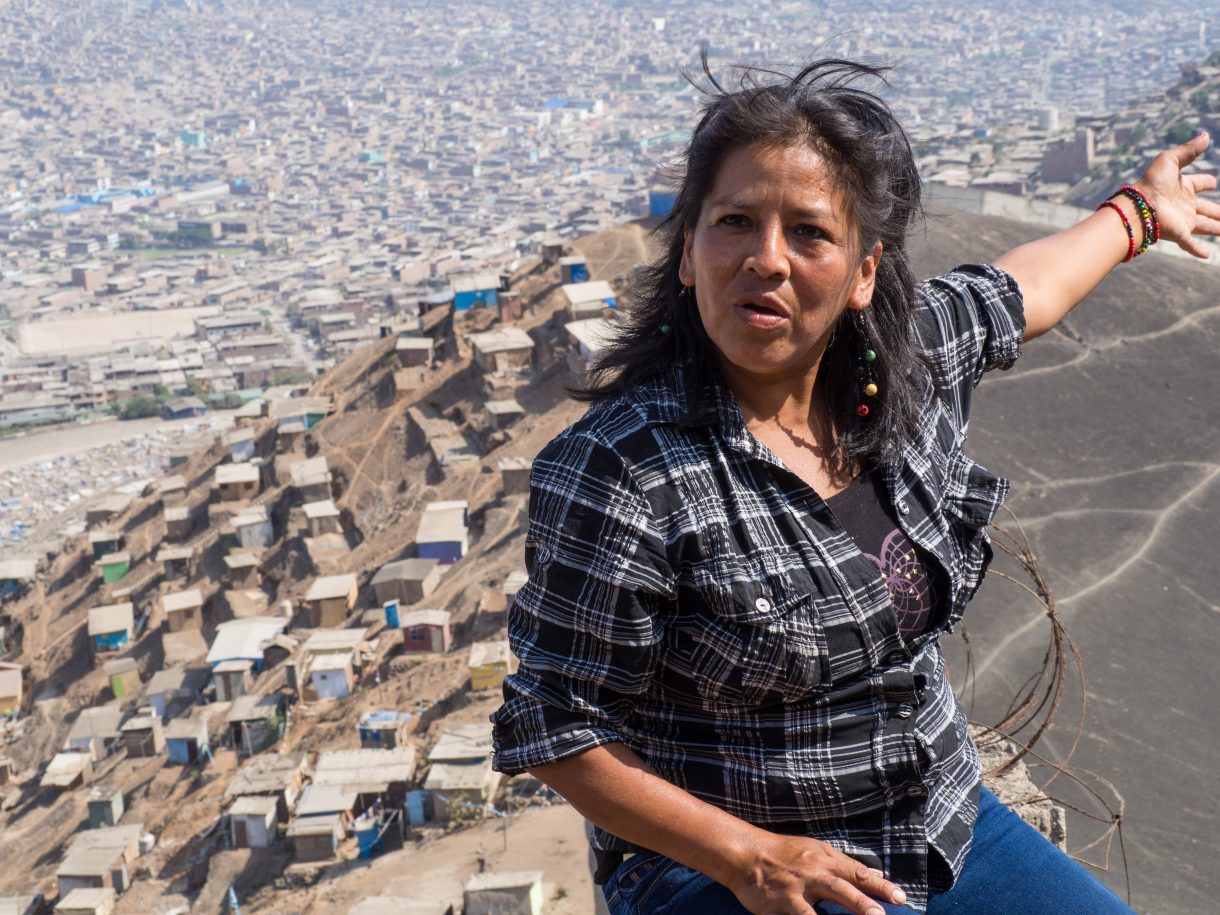In the shadow of the wall of shame
 “On one side of the wall are wealthy communities with big houses and swimming pools. One hundred meters away, people have nothing.” – Hector Falla, a risk management trainer who is part of the Civil Defense system in the San Juan de Miraflores municipality. Photo: Elizabeth Stevens / Oxfam America
“On one side of the wall are wealthy communities with big houses and swimming pools. One hundred meters away, people have nothing.” – Hector Falla, a risk management trainer who is part of the Civil Defense system in the San Juan de Miraflores municipality. Photo: Elizabeth Stevens / Oxfam America
A wall in Peru that separates rich and poor communities is an emblem of inequality and injustice.
There is a high wall in the outskirts of Lima, Peru, that snakes over the coastal mountains for miles.
It’s there to protect the rich from the poor. Simple as that.
On one side are wealthy communities with mansions and turquoise swimming pools; on the other, crowded settlements like Vista Hermosa, where residents—most of them recent arrivals from the countryside—live in dangerous conditions and lack access to the most basic city services, like water, sewage, electricity, and roads.
It’s as raw and ugly a symbol of inequality and injustice as you could hope to find anywhere.
Recently, it was dubbed “the wall of shame” after Oxfam pictures of it went viral.

On a recent trip to see how local humanitarians in Peru—community members, Oxfam partners, and government officials—were working together on disaster preparedness and risk reduction, I walked with community leader Sara Torres to where the wall finally came to an end near the top of a small mountain. I asked her what it was like to live under such a barricade.
“The wall of shame is an injustice,” she said. “An insult. Five years ago, you could go up the hill and see a beautiful view. That’s why they call it Vista Hermosa. You could see the beautiful houses and dream about having one someday. It could inspire you to work hard. A woman who had been beaten by her husband could go there and imagine a better life. Now she just sees a wall and gets more depressed.”
She went on. “Two or three years after we arrived, they started to construct that wall. We held protests. How much money, how many hours, how much cement did it take to build it? Just to divide rich people from poor people.”
She tried to imagine what it would be like to live in one of the wealthy communities we could see from our perch on the top of the wall. A delicious prospect, but she realized it would mean living side by side with people who believed in walling off humanity so knew it wasn’t for her.
“My hope for the future of my community is that people get to build good houses,” she said, “and that we are able to bring down that wall. You may be rich and I may be poor, but in the end we are all brothers and sisters. We can’t be separated.”
Read more about Oxfam’s inequality campaign.
Read more about the work of Oxfam and its partner PREDES in Sara’s community.